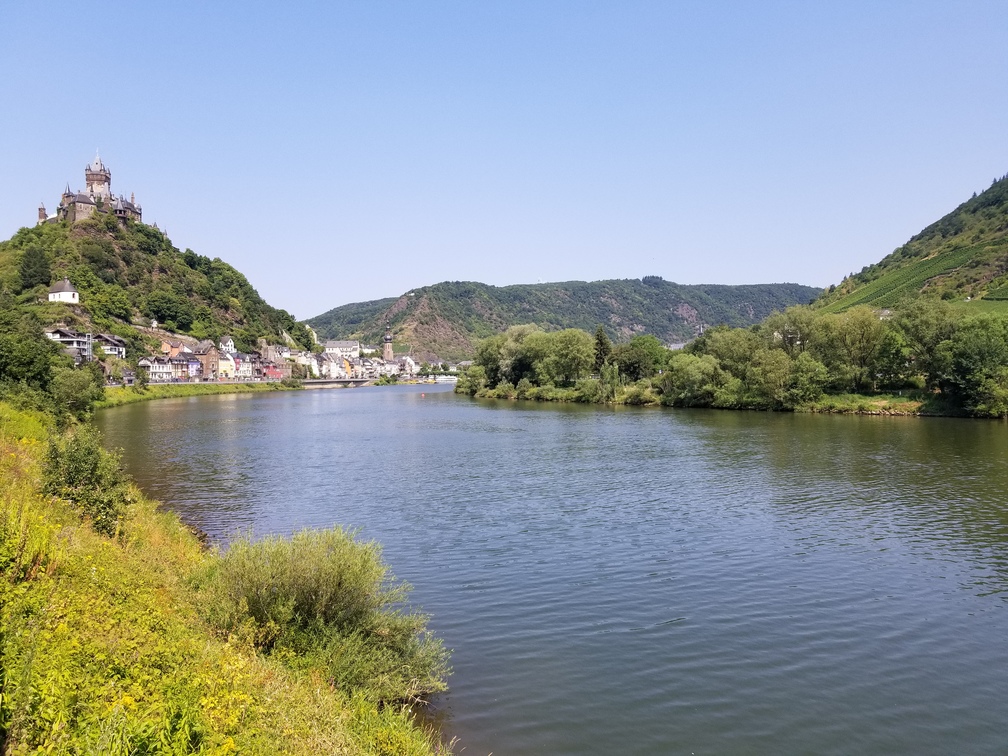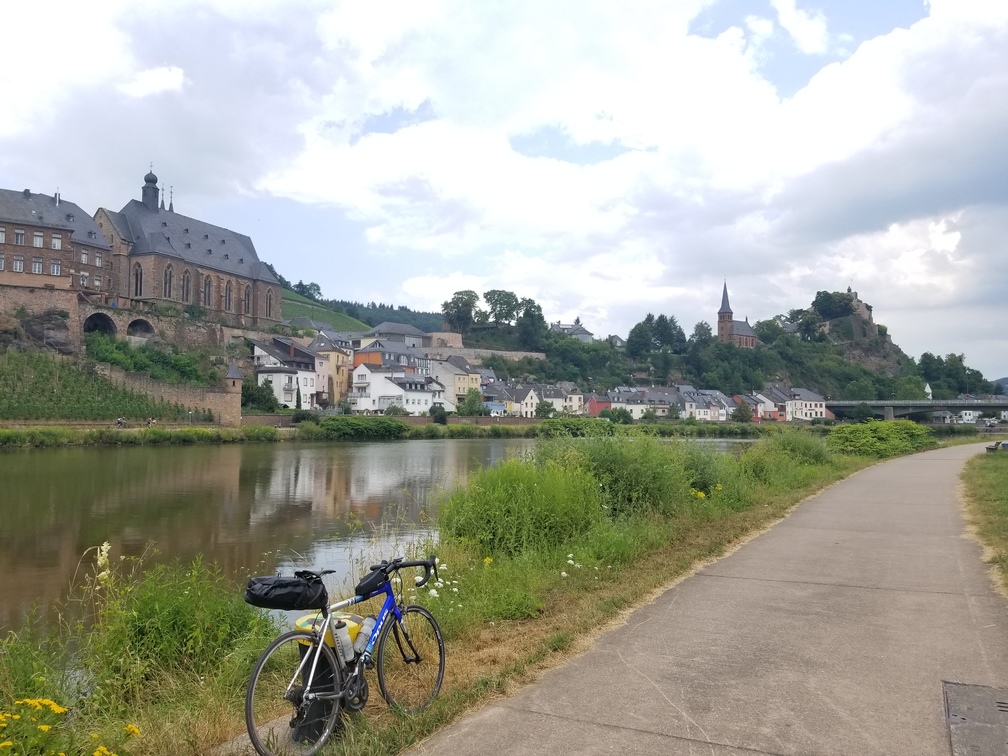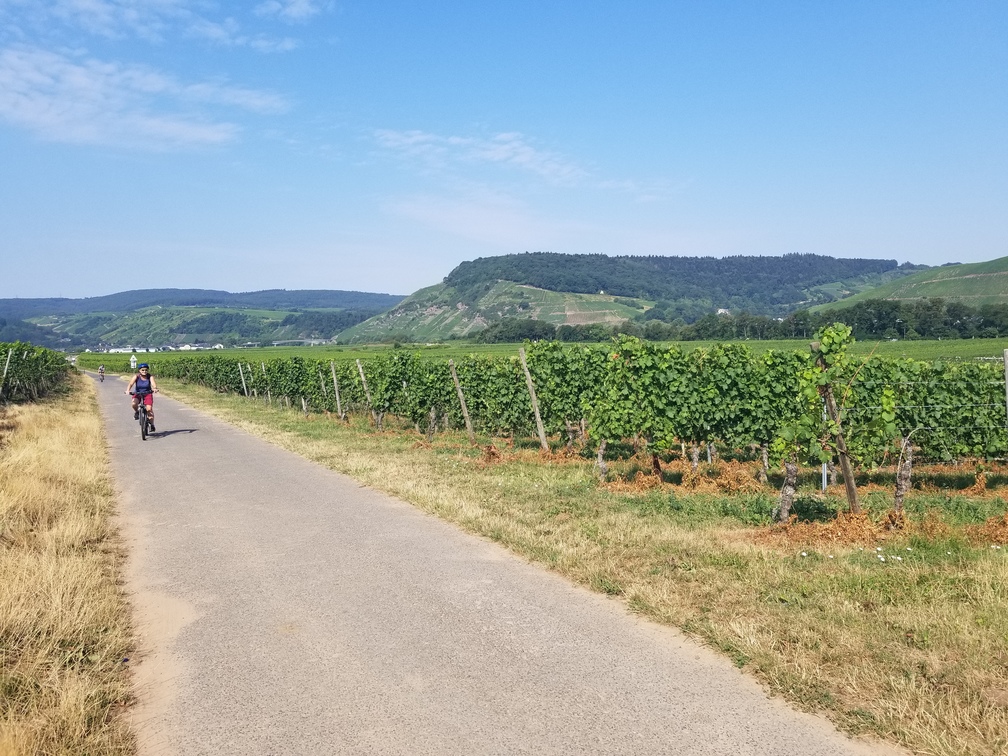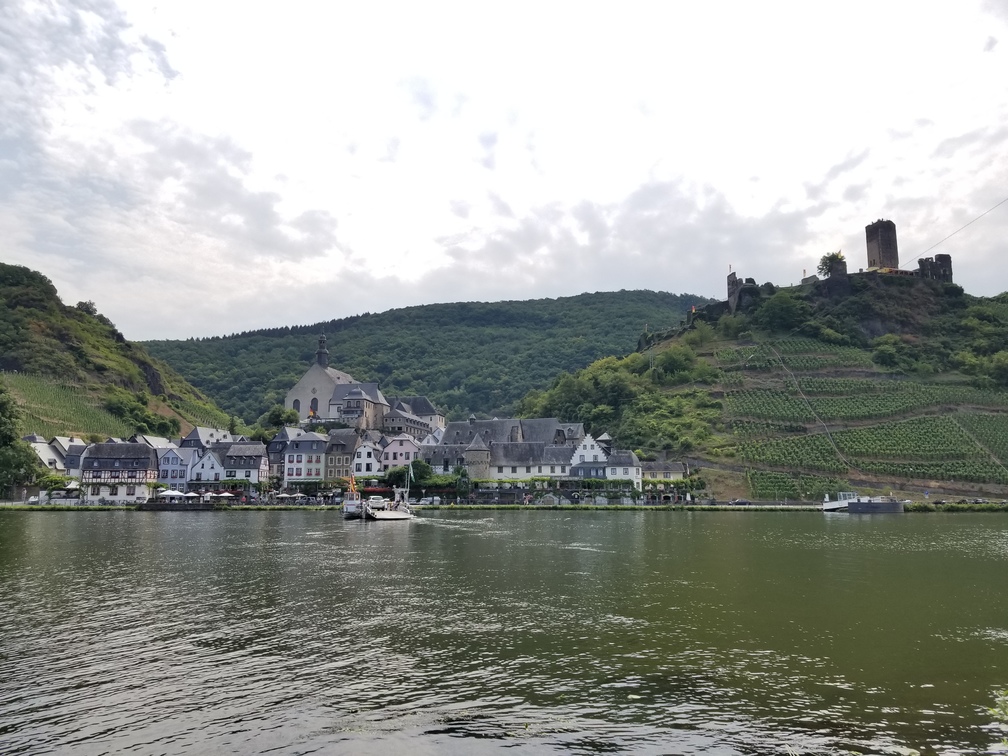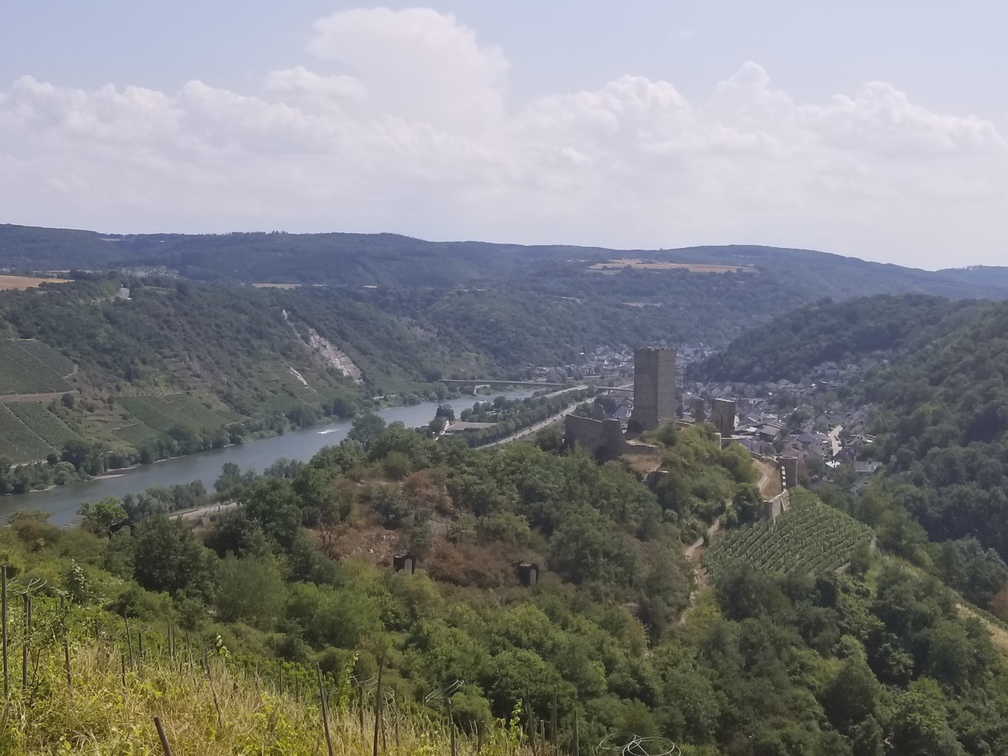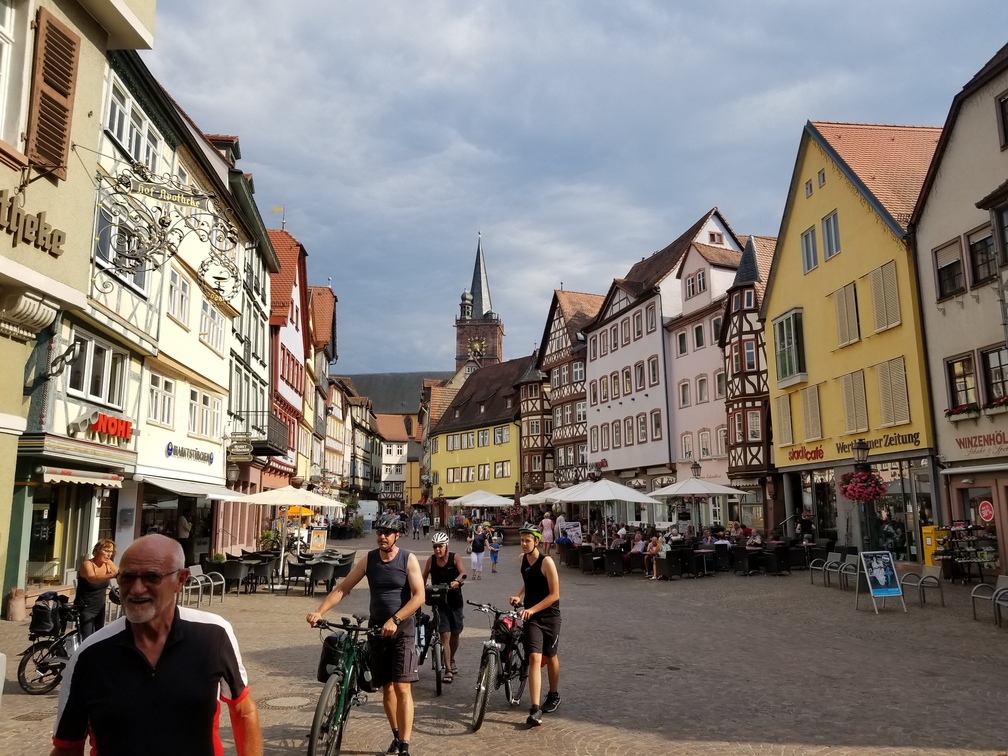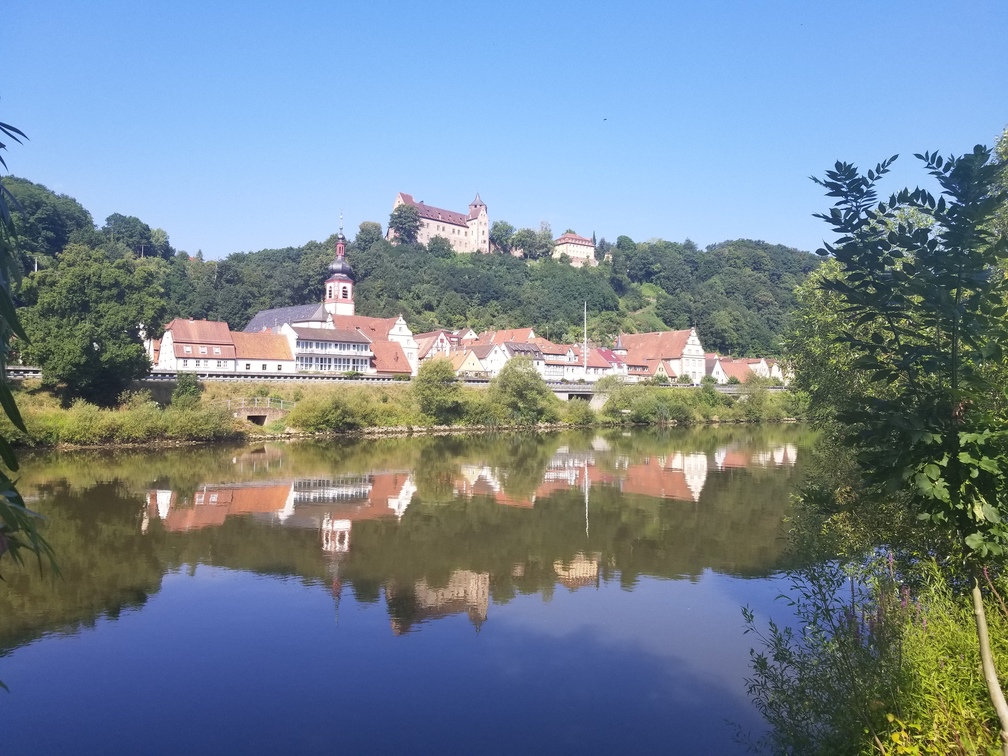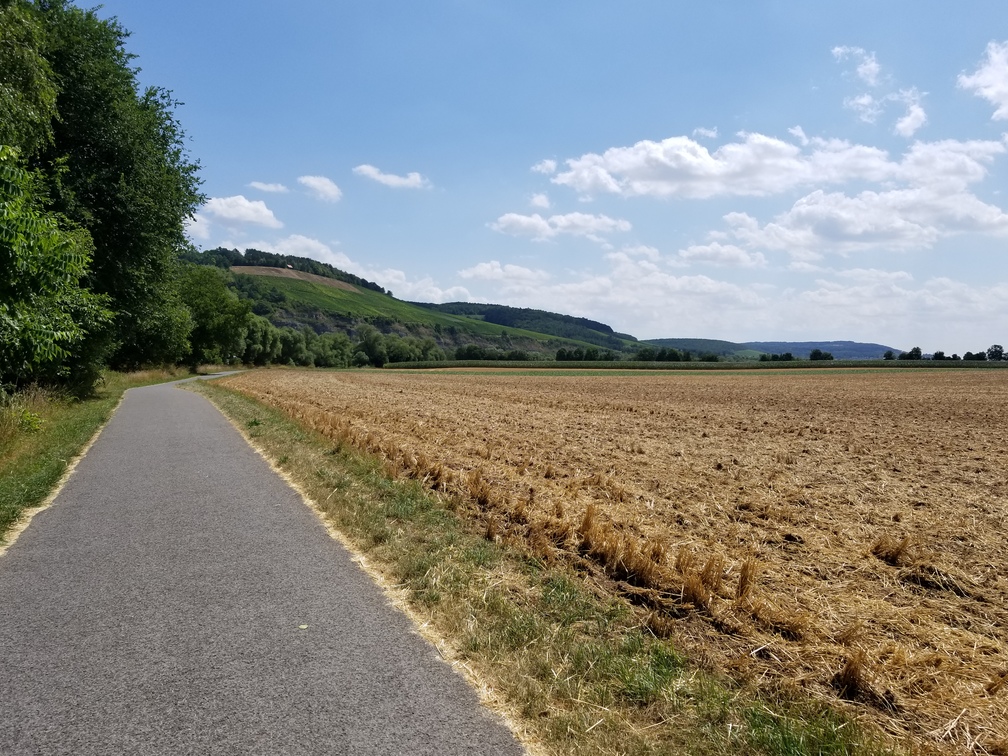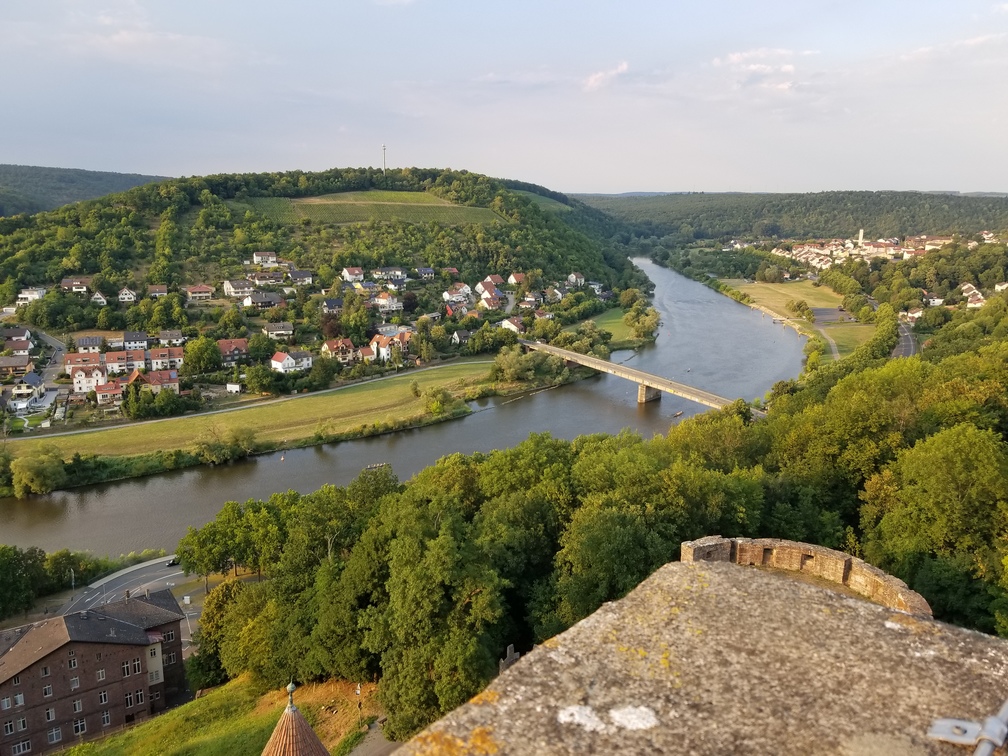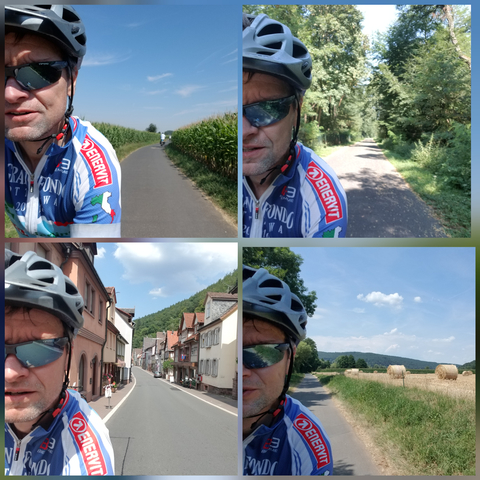I'd been warned by German friends that July can be rainy, but this proved not to be: it was hot and sunny every day. Nearly the entire route is on paved bike paths near river banks, usually out of sight from vehicle traffic, with occasional sections of gravel or road. The hills are few, low, and of moderate grades.
The cable on my rear shifter broke, resulting in being stuck in one gear for the final four of six days (details below), but the gentle grades and mostly calm winds made it possible to continue with only a working front derailleur at a comfortable pace, allowing me to enjoy these beautiful German rivers.
Related to bike storage, I brought a bike lock since I was travelling alone, which I used when entering stores, during lunch stops, or to lock my bike overnight in a hotel storage room. I purchased an Ottolock, which worked well. It fits in the rear pocket of a jersey and is light (175 g). It's not as secure as a u-lock, but provides a good compromise in terms of balancing light weight against preventing someone from easily running off with the bike.
I don't typically ride with a bell on my road bike, but I purchased one on my third day. This route has hundreds of riders, many of whom ride side-by-side. The bell allowed for easy passing without requiring me to achieve an understandable pronunciation of "Entschuldigung, ich gehe auf der linken Seite vorbei", German for "excuse me, I'm passing on your left".
I primarily followed a course from a GPX track downloaded from the D-Route 5 site. That track is outdated, and the actual route deviates in many places, but it was usually easy to determine the correct route. The route alternates between shores, crossing the river across bridges multiple times each day. In many places it's possible to ride on either shore, but in others one side is better for cycling. Given the density of roads and cities in Germany, I wasn't able to fit the entire background map on my Garmin Edge 520 (which only has 110 MB memory). I prepared four maps using Open Street Map (see DC Rainmaker's instructions) which I loaded onto my cell phone and intended to transfer between days using a USB cable.
The remainder of my equipment was essentially identical to what I used in 2016, with the addition of flip flops for the evenings.
After completing the trip I took the train from Würzburg back to Frankfurt airport. I wanted to avoid multiple train transfers with my bike (often with only a few minutes between trains), so I ended my ride in Würzburg, a larger centre with good train connections. It's recommended to reserve a spot for a bike on the train at least one day before travel; I purchased my ticket in person at the Würzburg train station on the afternoon prior to my departure by train.
I had a friend take my bicycle case and a suitcase from Dagstuhl to a hotel at the Frankfurt airport. I'd confirmed with the hotel in advance that I could leave my luggage with them as I would be spending a night at the hotel before my flight home. This should be straightforward to coordinate if flying in and out of Frankfurt.

